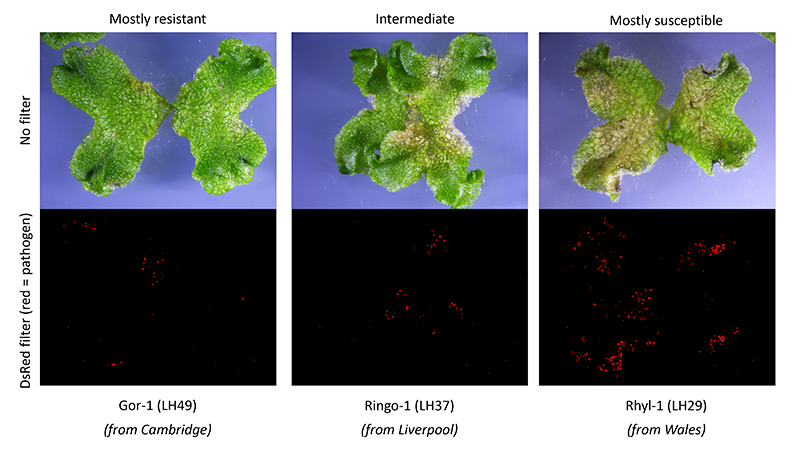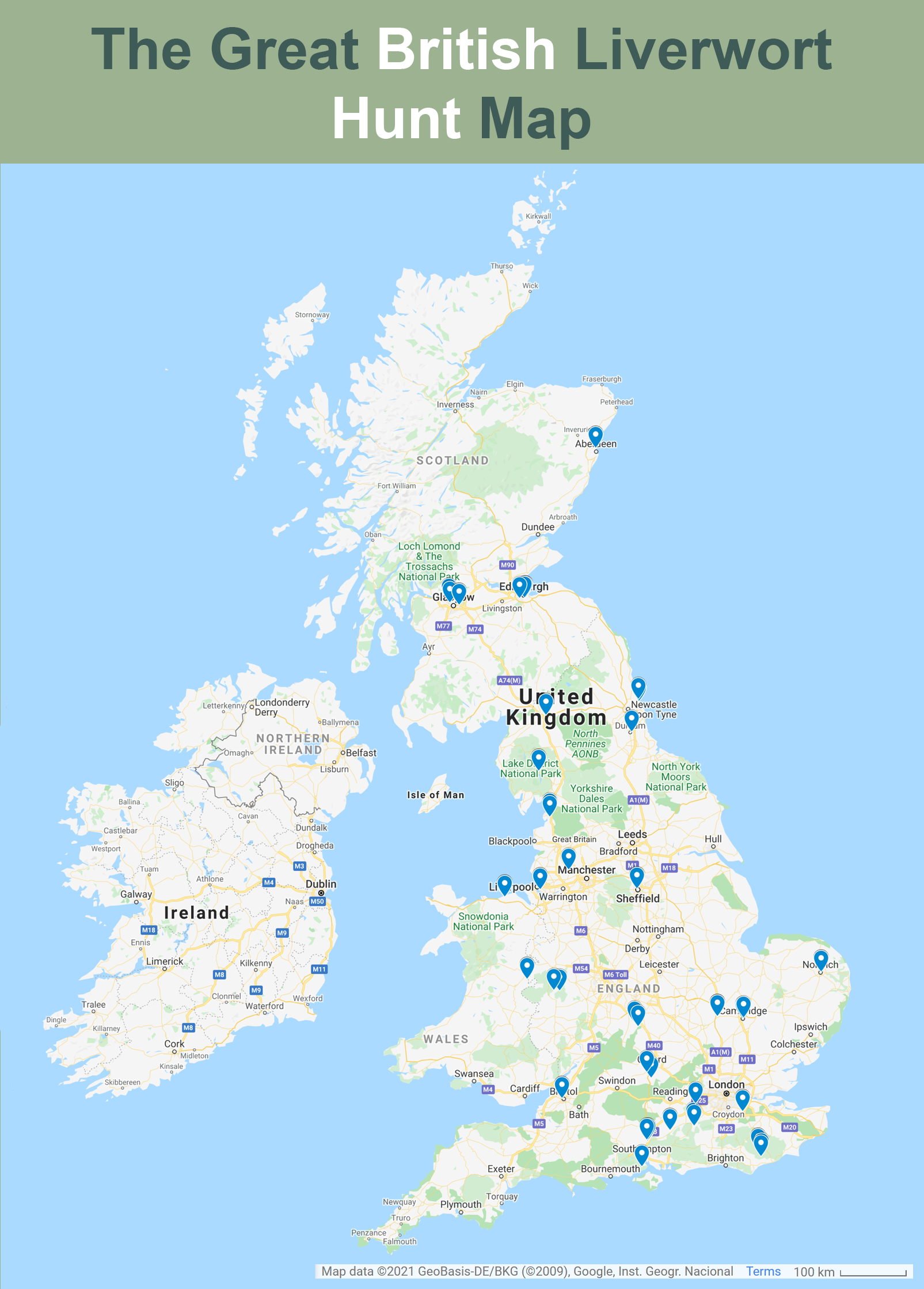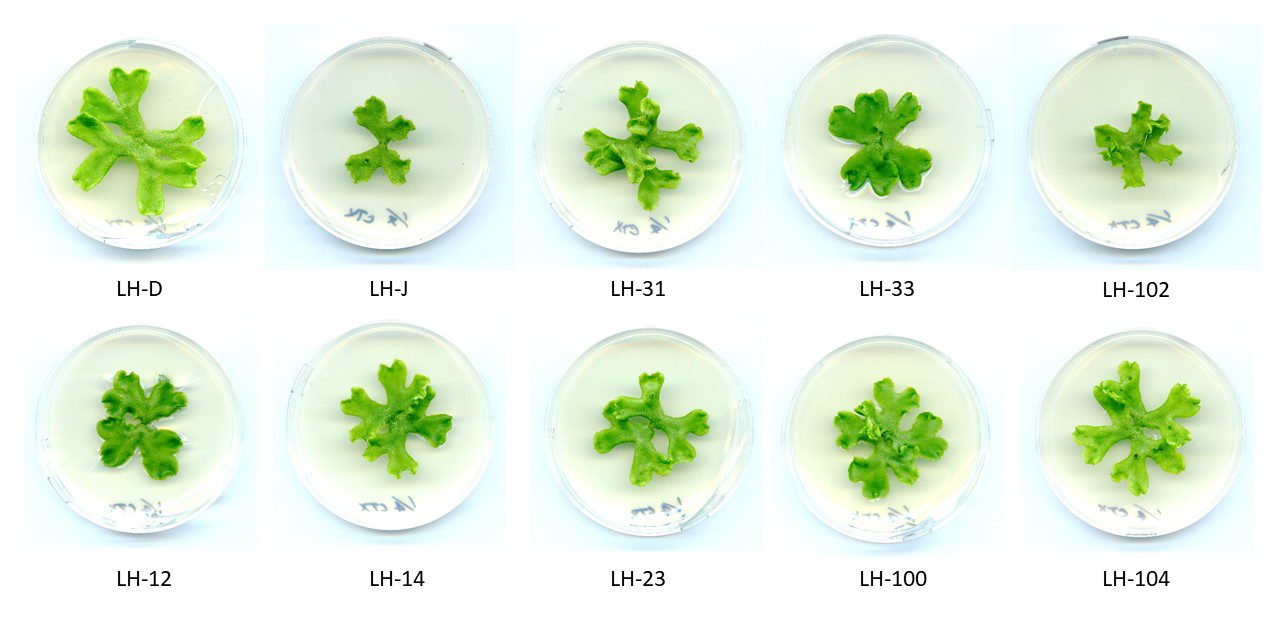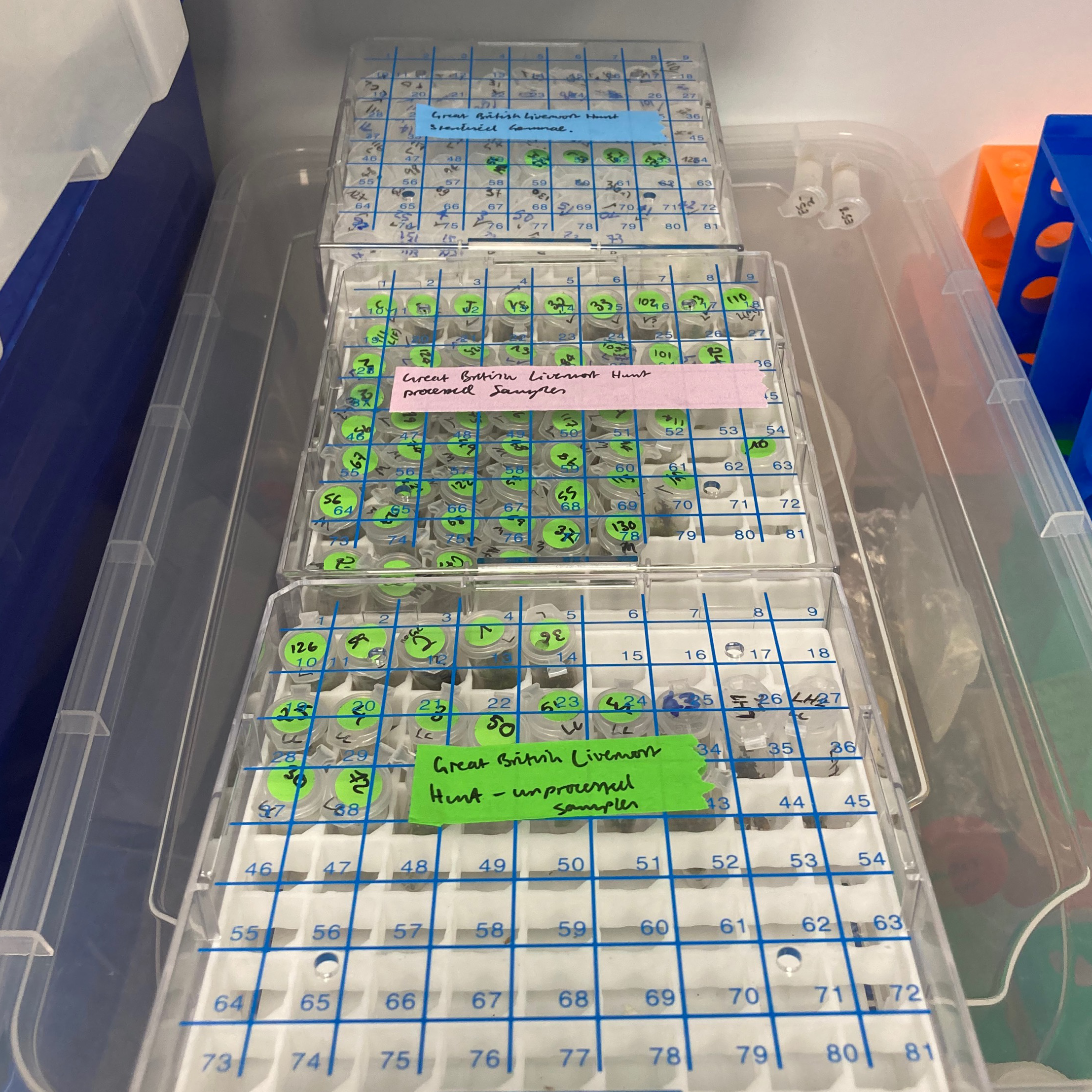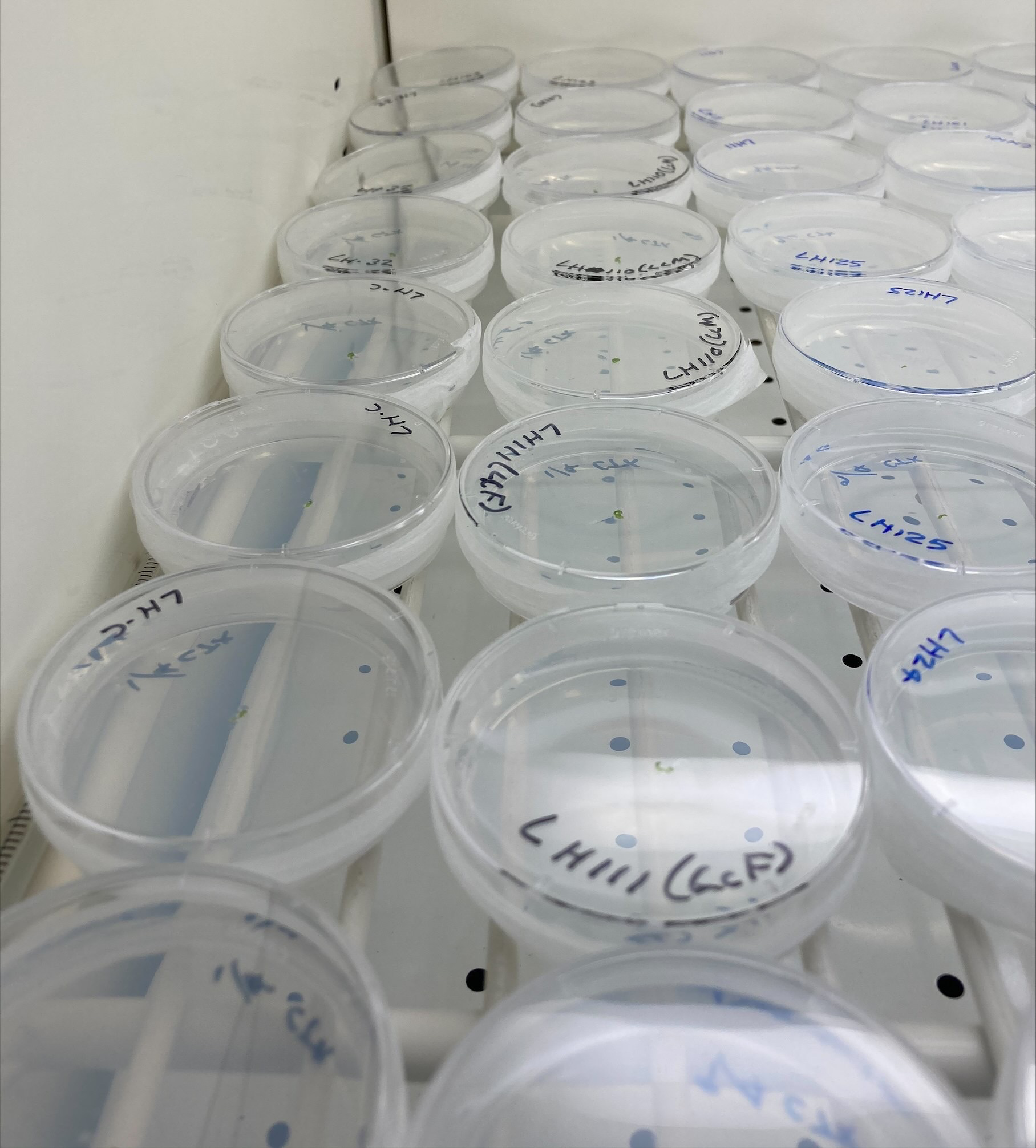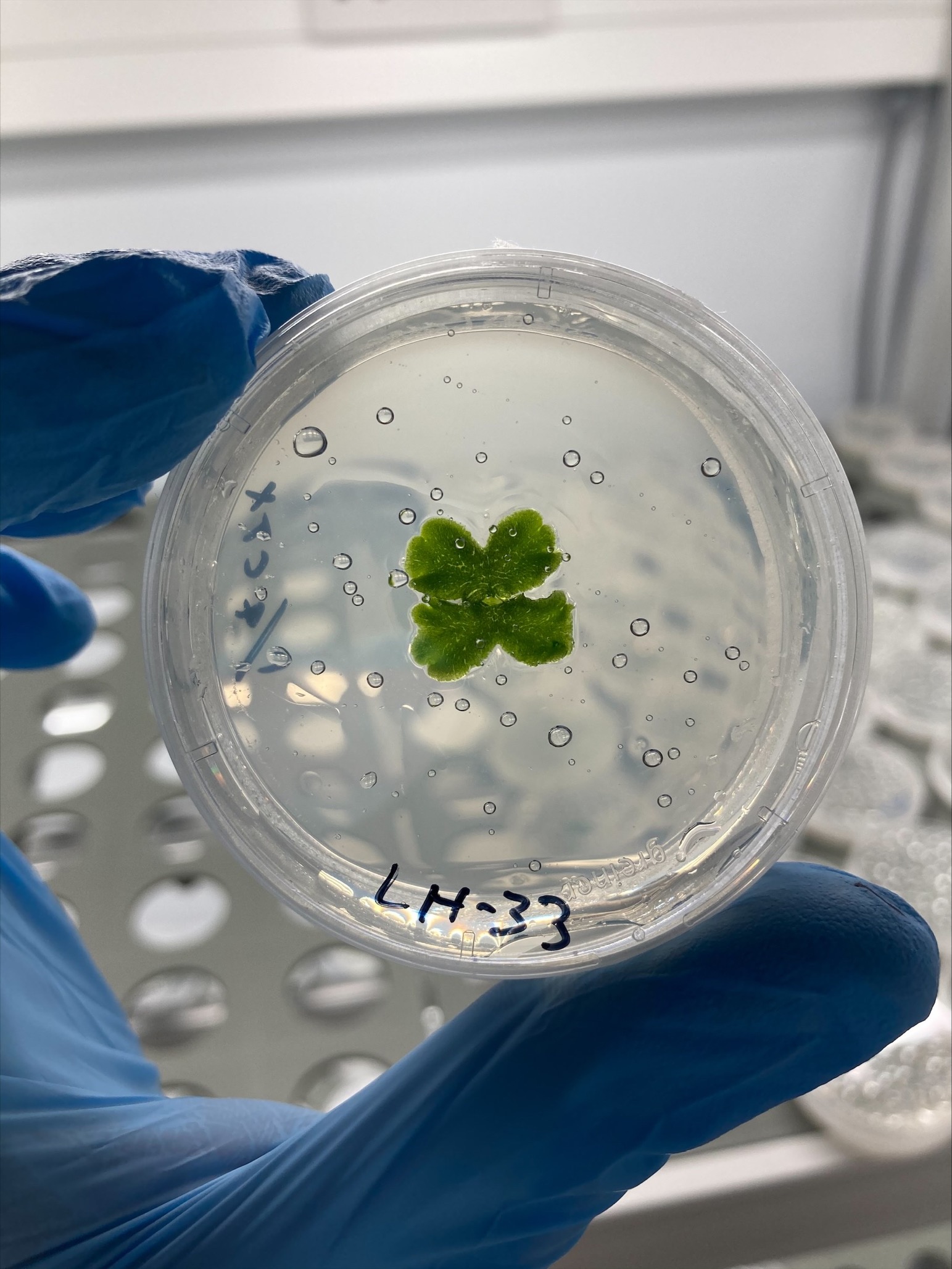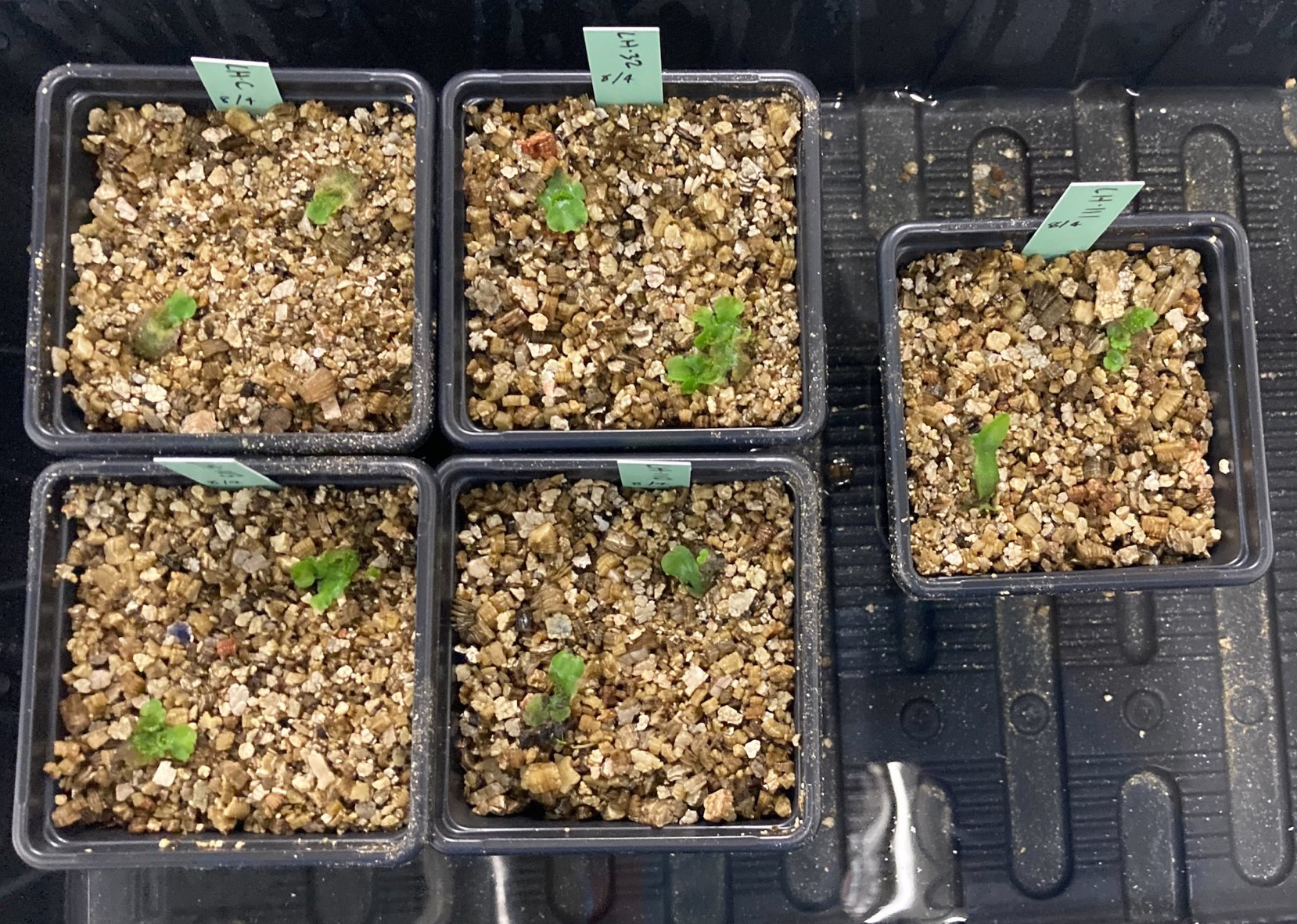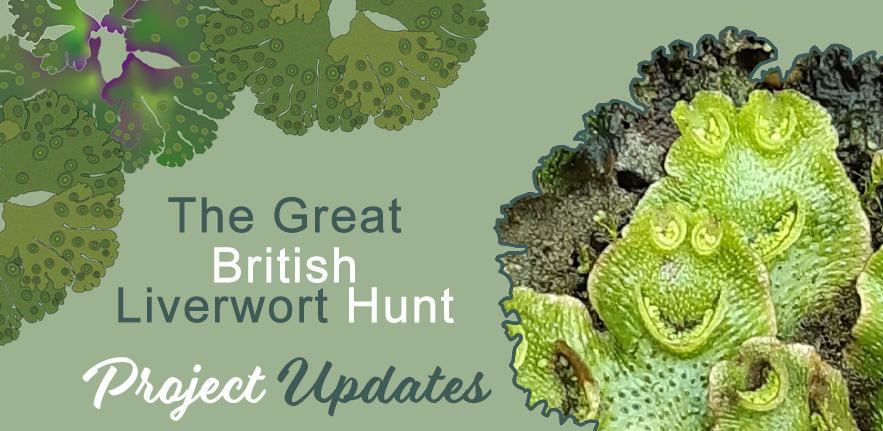
Now that we have received your samples you might be asking: What's next?
Keep checking this page for the latest updates on your liverworts!
Friday 16 July 2021
This is the first infection test with your samples. Here are three examples which are infected with the Phytophthora pathogen. By observing the samples under a UV lamp with a filter, we can visualise the pathogen which has a fluorescent red marker. We can see that the sample from Wales is overgrown with the pathogen and some necrotic spots can be seen on the plant. This line is therefore very susceptible to the pathogen. The Liverpool sample is more resistant, while the Cambridge one is even more so. All Marchantia samples will be challenged with the same pathogen, so that we can learn which plants have employed successful defence strategies against the pathogen.
Friday 28 May 2021
Now that we have received your samples, you might be wondering what is next for your little liverworts? Take a look at this behind the scenes video showing how our researchers are processing the samples.
Friday 7 May 2021
Our map is quickly filling up with pins of the liverwort samples!
Friday 30 April 2021
The next two batches of liverwort samples have been plated onto media - here they are at three-weeks old grown from a single tiny gemmae. Can you see your sample here or in the below photos?
When your samples arrive at the Sainsbury Laboratory they are quickly collected from the mail delivery box and then placed in a cold room to keep them alive until its time to extract gemmae to grow on plates.
Your liverwort samples are growing well. A single gemmae is placed on a media plate and then they go into plant growth chambers. Pictured above are your samples of Lunularia (left), which we are growing at 20C and 8-hours of light per day and Marchantia (right), which is maintained at 22C under constant light.
You might be able to just see tiny little dots in each plate - these are gemmae that are developing into new liverwort plants. Liverworts are fast growing - Machantia grow faster than Lunularia.
Friday 23 April 2021
We are so pleased to have received samples from across Britain! Can you spot yours?
Our first samples of Marchantia polymorpha which are now 3 weeks old, are already showing differences in growth and morphology!

